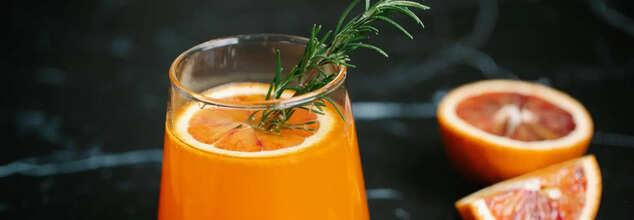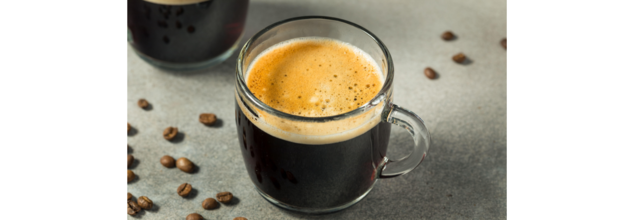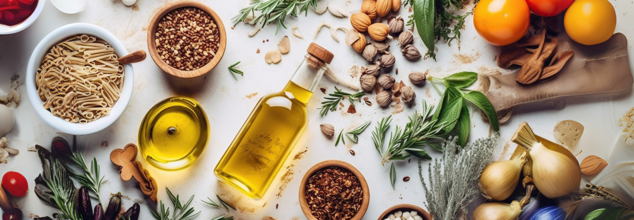- Health Conditions A-Z
- Health & Wellness
- Nutrition
- Fitness
- Health News
- Ayurveda
- Videos
- Medicine A-Z
- Parenting
- Web Stories
Juices Kill Your Gut Bacteria, Increase Inflammation: Study Shows

Credit: Canva
There has been a trend of substituting whole fruits with juice, particularly among young children. Moreover, many health and wellness influencers promote so-called "juice cleanses", making them look like the ultimate health routine. But, a new study has found that juices negatively affect gut and oral bacteria and potentially lead to long-term health consequences. Gut microbiota—the collection of bacteria, viruses, and fungi that live in our intestines—plays a pivotal role in maintaining our health and wellness.
What Was The Study About?
For the study, one group of healthy adults only drank juice, another consumed juice with whole foods, and a third group ate only plant-based food. The researchers then analyzed bacterial changes in people from all three groups using saliva, cheek swabs, and stool samples before, during, and after the experiment. They found that people who drank only juice had a reduction in beneficial Firmicutes bacteria while inflammation-linked Proteobacteria rose. Bacteria linked to gut permeability also rose. At the end of the study, the researchers concluded that juicing alone disrupted the gut microbiome. The findings are published in the journal Nutrients."Most people think of juicing as a healthy cleanse, but this study offers a reality check," said senior study author Dr Melinda Ring, director of the Osher Center for Integrative Health at Northwestern University Feinberg School of Medicine and a Northwestern Medicine physician. "Consuming large amounts of juice with little fibre may lead to microbiome imbalances that could have negative consequences, such as inflammation and reduced gut health," Ring explained in the conclusion of the research.
ALSO READ: This Is The Healthiest Type Of Milk And No It Is Not Cow Milk
Juice Eliminates Fibres And It Is Important
Ring reports that juicing strips away much of the fibre in whole fruits and vegetables. Fibre is an important component found in whole grains, fruits, and vegetables. It serves as the primary energy source for beneficial gut bacteria, playing a vital role in digestive health. Despite its importance, less than 5 per cent of people in the US consume the recommended 25–30 grams of fibre per day. Fibre also helps slow down the absorption of sugar, leading to more stable blood sugar levels. It also lowers cholesterol and lessen the risk of heart disease and stroke.
Researchers said that the study highlights how quickly dietary choices can influence health-related bacterial populations. The oral microbiome appears to be a rapid barometer of dietary impact.
Want To Boost Gut Bacteria? Try Probiotics
Probiotics are a great way to protect and even boost your gut bacteria. These are live beneficial bacteria that can improve gut health. Foods like yoghurt, kimchi, or sauerkraut can help balance the gut microbiota and support immune function. It can also add new probiotic strains to the gut microbiome. A 2018 study noted that exclusion of certain food items could also help maintain a healthy gut microbiome. These include refined sugars, grains and pulses, alcohol, caffeine and dairy.ALSO READ: Patrick Mahomes's Favourite Superbowl Snack Has This One Harmful Ingredient
Weight Loss And Lower Blood Pressure Are Both Possible With These Study Approved Diets

(Credit-Canva)
Every now and then, we hear about new diets and eating habits that can help you lose weight. However, not all of them are safe to follow. Many of these diets focus on just one aspect like losing fat, ignoring other parts of our health. Weight loss that comes at the cost of your health is not sustainable and can cause long-term health issues.
So, the question arises, which diets are the healthiest to follow and how do they benefit our health. A new study has answered that question for us. The study entailed how these diets not only help you lose weight but also lower your blood pressure.
Putting Two Diets to the Test
In a recent study published in the Nutrients journal researchers compared the keto and Mediterranean diets in 26 people who were overweight or obese with high blood pressure tried either the keto or Mediterranean diet. Fifteen people followed the keto diet, and eleven followed the Mediterranean diet. Everyone ate about 1,300 calories a day. The keto diet was high in protein and fat, but very low in carbs. The Mediterranean diet was high in carbs (especially from whole grains, fruits, and veggies) and potassium, but low in salt.
After three months, both groups lost weight and had lower blood pressure. They also saw drops in waist size and body fat. The only real difference was that the keto diet led to a bigger drop in blood pressure overnight, which could mean a healthier heart. Keep in mind the study was small, short, and people chose their diets instead of being randomly picked.
How These Different Diets Work
Even though they're very different, both diets helped people in the study. The keto diet works by making your body burn fat for energy instead of carbs, a process called ketosis. This happens because you eat very few carbs. The Mediterranean diet is based on traditional eating in places around the Mediterranean Sea, focusing on whole grains, fruits, vegetables, and healthy fats, with less animal protein and fat. It's thought to help people live longer.
Both diets lead to weight loss, which then helps lower blood pressure. The study participants lost weight mainly because they ate fewer calories. However, the healthy foods and nutrients in both diets also play a role.
Which Diet Is Better for You?
While both diets can help, experts usually suggest the Mediterranean diet over the keto diet. The keto diet can cause quick weight loss and help with blood sugar, but it's very strict and hard to stick with long-term. Cutting out carbs means missing out on fiber, which is vital for weight, heart health, and digestion. The keto diet can also lead to higher cholesterol, digestive problems, "brain fog," and a "keto flu" in the beginning.
The Mediterranean diet is less extreme and doesn't forbid any foods. This makes it easier to follow for life. It has many proven benefits, like reducing inflammation, helping your heart, lowering diabetes risk, preventing some cancers, and improving brain health. While it can help with weight loss, it's more about a healthy way of eating that makes you feel full and satisfied.
Picking the Right Diet for You
The keto diet might be right for a few specific groups, like people preparing for weight-loss surgery or those with epilepsy. Some early research also suggests it could help with type 2 diabetes. However, experts agree that the Mediterranean diet can work for almost anyone. You can often adjust it to fit your cultural foods. When choosing a diet, think about:
- What are your long-term health goals?
- What diet plan is realistic for you to follow?
- What foods do you enjoy eating?
- What can you stick with for a lifetime?
Not Your Fancy Latte, Black Coffee May Help Lower Your Risk Of Early Death

Credits: Canva
Most of us reach for our morning coffee with a single goal in mind—energy. But what if that humble cup of black coffee could do more than just wake you up? New research suggests it might actually extend your life. While cream-laced lattes and syrupy café concoctions dominate the market, it's the unadulterated cup—free of sugar and heavy cream—that appears to carry powerful, long-term health benefits. According to two major studies, including one led by researchers at Tufts University and another by Harvard, your daily coffee ritual may be silently contributing to both a longer life and healthier aging provided you keep it simple.
A newly published observational study by the Friedman School of Nutrition Science and Policy at Tufts University has revealed a noteworthy link between black coffee consumption and a reduced risk of early death. Drawing on two decades of national health survey data involving 46,000 U.S. adults, the study found that those who drank 1–2 cups of caffeinated black coffee daily experienced a 14% lower risk of death from all causes. Notably, the protective benefits were strongest when the coffee was consumed with little to no added sugar or saturated fat.
Dr. Fang Fang Zhang, senior author and professor at the Friedman School, emphasizes the nuance: “The health benefits of coffee might be attributable to its bioactive compounds, but our results suggest that the addition of sugar and saturated fat may reduce the mortality benefits.”
This comprehensive analysis relied on data from the National Health and Nutrition Examination Survey (NHANES), cross-linked with National Death Index records from 1999 to 2018. Mortality factors considered included deaths from all causes, cardiovascular disease, and cancer. The researchers categorized coffee drinkers by caffeine content and levels of added sugar and fat, setting clear benchmarks for what qualifies as “low” sugar and fat content.
Why Additives In Your Coffee Can Cancel Out Its Benefits?
The devil, it seems, is in the dairy. While coffee itself contains antioxidant-rich bioactive compounds that may improve heart health, reduce inflammation, and support metabolic function, loading your cup with creamers, syrups, and whipped toppings may negate these benefits.
Specifically, the Tufts study defines “low sugar” as under 2.5 grams (about half a teaspoon) per 8-ounce cup, and “low fat” as under 1 gram of saturated fat—the equivalent of 5 tablespoons of 2% milk or a tablespoon of half-and-half. Exceeding these thresholds was linked to a diminished or even absent association with reduced mortality risk.
According to first author Bingjie Zhou, “Our results align with the Dietary Guidelines for Americans which recommend limiting added sugar and saturated fat.”
Link Between Black Coffee and Healthy Aging
Adding another layer to the discussion, a separate longitudinal study from Harvard T.H. Chan School of Public Health monitored over 47,000 women for three decades. Researchers discovered that women who drank at least one cup of coffee daily were significantly more likely to reach old age in good physical and cognitive health.
Dr. Sara Mahdavi, the lead researcher, explained: “While past studies have linked coffee to individual health outcomes, our study is the first to assess coffee’s impact across multiple domains of aging over three decades.” These domains included mental sharpness, physical mobility, and absence of major chronic disease.
The study, presented at the American Society for Nutrition’s annual conference, found that habitual coffee drinkers were statistically more likely to fall within a group labeled as experiencing "healthy aging." That means fewer chronic conditions, greater cognitive function, and better overall vitality as they aged—remarkable results that again favored moderate black coffee consumption over sugary or high-fat alternatives.
How Much Coffee Is Too Much?
According to the Tufts data, drinking more than three cups of coffee per day did not significantly improve longevity and, in some cases, weakened the protective link between coffee and cardiovascular mortality. In other words, more is not necessarily better.
Experts also point out that moderation and personalization matter. People with underlying heart issues, insomnia, or sensitivity to caffeine should consult their healthcare provider before increasing their coffee intake. Moreover, self-reported food recall surveys, which this study relied on, have inherent limitations. Daily fluctuations in diet and underreporting can affect accuracy, although the large sample size and consistent findings still give the data substantial credibility.
What do these findings mean for your daily routine? If you're already a black coffee drinker, science just handed you a compelling reason to stay the course. If your go-to order resembles a dessert in a cup, you might want to rethink your approach.
To reap the most benefits, consider switching to unsweetened black coffee or limit add-ins to small amounts of plant-based or low-fat dairy alternatives. The key takeaway is that the simplicity of black coffee—not its fanciful counterparts—may hold the secret to living not just longer, but better.
In a world overflowing with complicated wellness trends and expensive superfoods, the latest research offers something refreshingly simple: black coffee. Affordable, accessible, and already a staple for millions, it might be one of the easiest lifestyle tweaks you can make for long-term health.
RFK Jr. Claims Seed Oils Are 'Poison' But This What They Actually Do To Your Body

Credits: Freepik
Every trip to the grocery store involves hundreds of tiny decisions—what to cook, which brand to trust, and which ingredients to avoid. Lately, a surprising kitchen staple has found itself at the center of a growing health debate: seed oils. From social media rants to political commentary, these oils—common in packaged snacks, salad dressings, and frying pans—have been labeled everything from harmless to hazardous. But what do science and nutrition experts actually say about their impact on the human body?
Robert F. Kennedy Jr., the Health and Human Services secretary and independent presidential candidate, took to X (formerly Twitter) claiming that Americans are being “unknowingly poisoned” by seed oils, the statement ignited a firestorm online. From TikTok wellness influencers to dieticians and food scientists, the conversation over seed oils has escalated rapidly—drawing fierce debate on whether these everyday oils are the dietary villains they’re made out to be.
Kennedy isn’t alone. Seed oils have been branded the “hateful eight” by anti-inflammatory diet communities, referring to oils like canola, corn, cottonseed, soybean, sunflower, safflower, grapeseed, and rice bran. They’re commonly found in ultra-processed foods, fast food fryers, baked goods, and even some salad dressings—making them a staple in the modern Western diet.
But is the panic justified? Or is the problem more about what we're eating along with these oils?
What Are Seed Oils?
Seed oils are vegetable oils extracted from the seeds of plants such as sunflowers, soybeans, and cotton. Most are refined, deodorized, and bleached for clarity and shelf stability. They’re prized in the food industry for their neutral taste, affordability, and high smoke point, making them ideal for everything from frying to baking.
Nutritionally, these oils are high in polyunsaturated fats, including omega-6 fatty acids—an essential nutrient that the body cannot produce on its own. But too much of a good thing can be a problem, especially when the balance between omega-6 and omega-3 intake becomes skewed.
Seed Oils: Poison or Misunderstood?
Despite RFK Jr.'s inflammatory remarks, nutritionists and public health experts argue that it’s not the seed oils themselves that are inherently dangerous—it’s the context in which they’re consumed. Experts at the Cleveland Clinic explain that we’re not being poisoned by seed oils. We’re poisoning ourselves with ultra-processed foods that are full of them.”
In other words, it's not the occasional drizzle of canola oil on your roasted veggies that poses harm—it’s the diet overloaded with deep-fried snacks, packaged chips, and frozen fast food alternatives that leads to excessive omega-6 consumption and poor health outcomes.
What Happens to Your Body When You Consume Seed Oils?
Let’s break down what current research really tells us about the impact of seed oils on the body:
1. Heart Health Gets a Boost
Replacing saturated fats like butter or lard with polyunsaturated fats from seed oils can lower LDL cholesterol and triglycerides. Linoleic acid, a key component in seed oils, has been shown to reduce the risk of heart disease when consumed in moderate amounts.
2. Inflammation May Not Increase as Feared
Contrary to popular belief, research suggests that seed oils do not inherently increase inflammation. When consumed as part of a balanced diet, omega-6 fatty acids may actually support healthy inflammatory responses necessary for immune function.
3. May Aid Weight Management
Though evidence is still developing, some studies show that omega-6 and omega-3 fatty acids help regulate fat storage and metabolism. Canola and sesame oils, in particular, have been associated with modest weight loss in some small-scale trials.
4. Support for Blood Sugar Regulation
Seed oils rich in polyphenols—like flaxseed and sesame oil—may help improve insulin sensitivity and lower fasting blood sugar levels. These oils could play a supportive role in diabetes management.
5. Antioxidant Effects
Many seed oils are rich in tocopherols (vitamin E compounds), which act as antioxidants. This helps protect cells from oxidative damage, a major contributor to aging and chronic disease.
6. Skin and Brain Health
Topically applied seed oils help moisturize skin and improve its barrier function. Meanwhile, the fatty acid content also supports cognitive health, with omega-6 arachidonic acid playing a role in brain development.
Should Everyone Consume Seed Oils?
Not necessarily. There are specific groups for whom seed oils may be less suitable:
People with allergies: Common allergens include peanut, sesame, soy, and sunflower oils.
Those with fat malabsorption issues: Individuals with gallbladder, liver, or pancreatic conditions should consult a doctor before increasing fat intake.
People avoiding ultra-processed foods: Seed oils often appear in processed items that are best avoided for reasons beyond just the oil content.
Those managing inflammation or autoimmune diseases: Experts suggest balancing omega-6 intake with omega-3-rich foods like chia seeds, flaxseed, or fatty fish.
Choosing the Right Seed Oil
If you’re going to use seed oils—which most people do—it’s important to make informed choices:
Cold-pressed or extra virgin oils retain more nutrients and are great for dressings and garnishes.
Refined oils like soybean, safflower, and corn are better suited for high-heat cooking.
Storage matters: Keep oils in a cool, dark place in opaque bottles to prevent oxidation.
Watch your quantity: Fat should make up 20–35% of your daily calories—roughly five tablespoons of oil per day.
It’s easy to villainize a single ingredient, especially when social media soundbites overshadow science. But the evidence shows that seed oils, when consumed in moderation and within a balanced diet, are not toxic. Rather, they can support heart, brain, and metabolic health—provided they’re not delivered in a deep-fried, ultra-processed package.
Instead of fearing seed oils, the focus should be on reducing overall consumption of heavily processed foods and rebalancing our fat intake by incorporating more omega-3-rich ingredients. The enemy isn’t the oil—it’s how and where we’re getting it.
Before buying into the next viral food scare, take a step back and consider the bigger picture. Nutrition is complex, and labeling seed oils as “poison” only adds noise to a conversation that demands clarity, balance, and evidence-backed guidance.
© 2024 Bennett, Coleman & Company Limited

